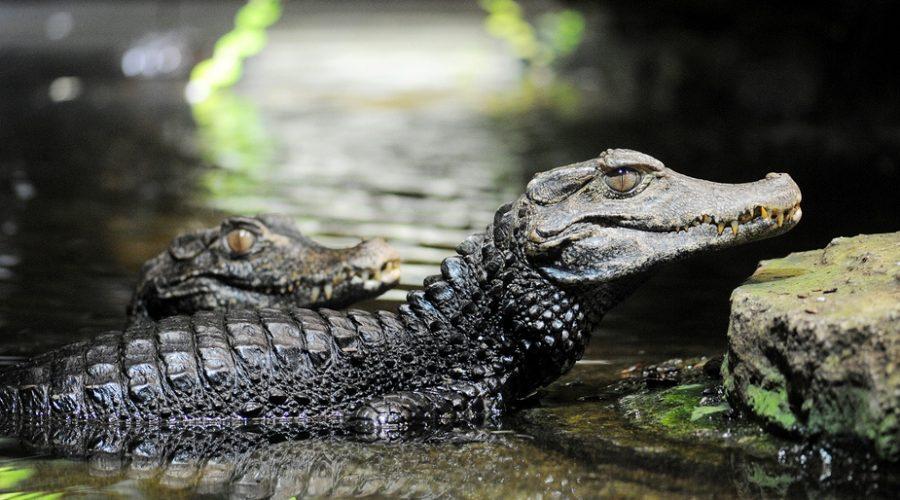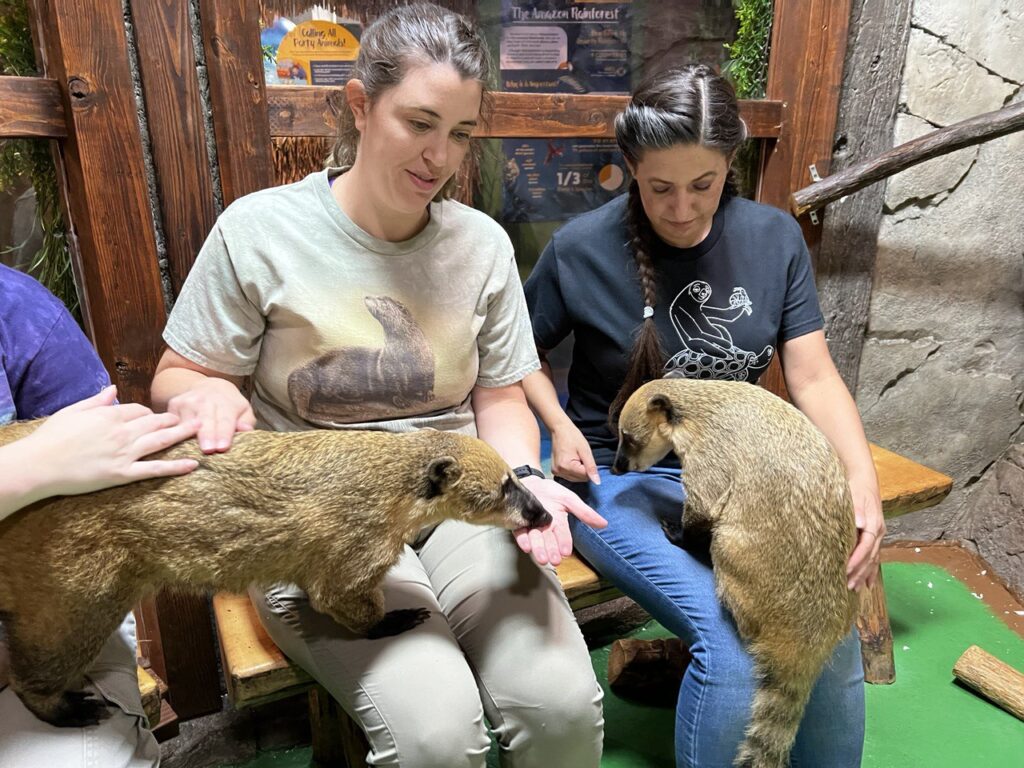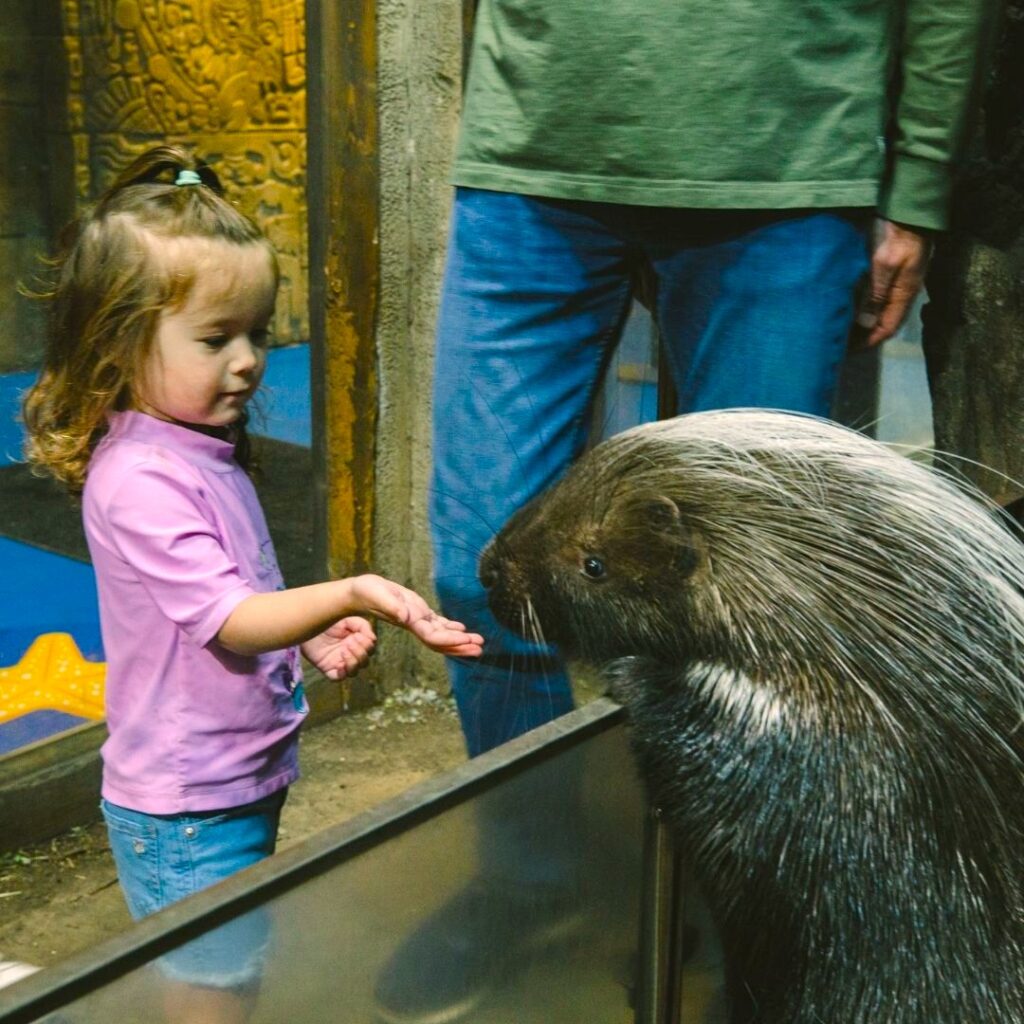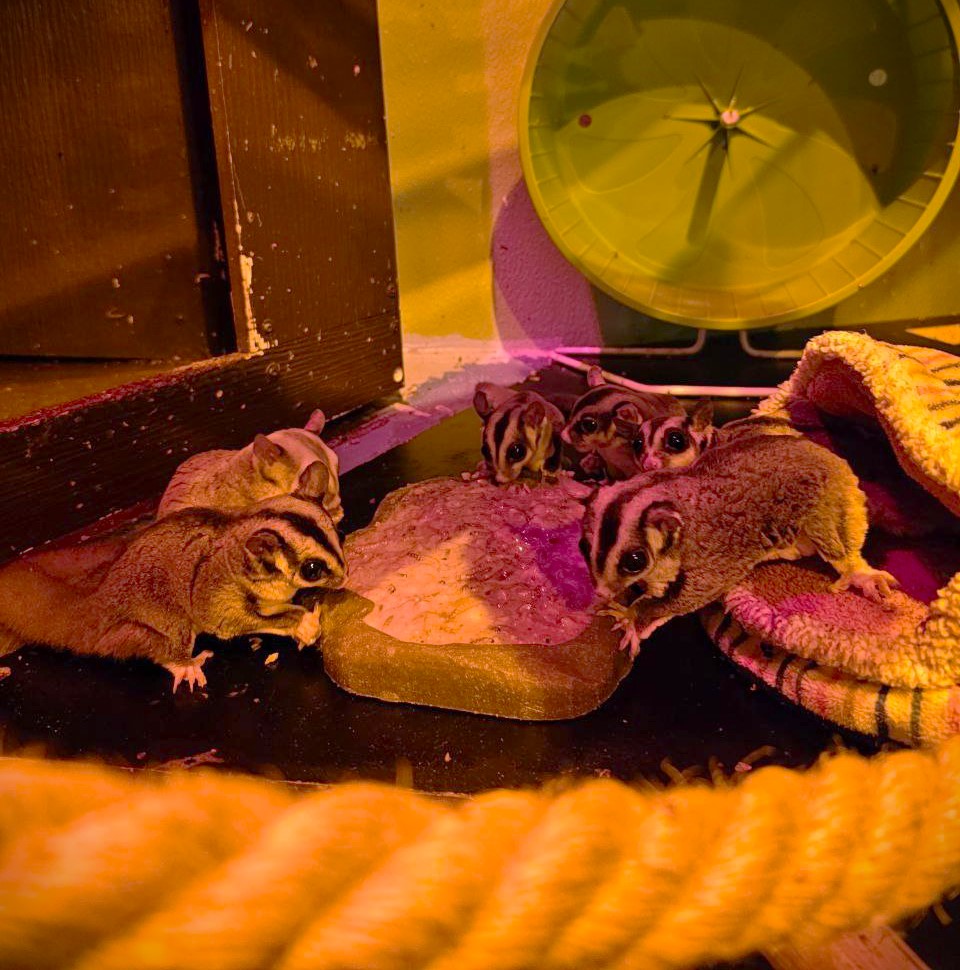Meet the Dwarf Caiman!
Share it on:

What is a Dwarf Caiman?
Known as the smallest member of the crocodilia order, the dwarf caimans are native to the rivers and swamps of South America, where they have to contend with predators like jaguars and anacondas. They are also commonly named Cuvier’s dwarf caiman, the musky caiman or smooth-fronted caiman. Dwarf caimans are dark brown or olive green, with a light-colored band running along their sides. And despite their fierce reputation, dwarf caimans can be gentle little “giants” of the Amazon swamps.
How Big Does Dwarf Caiman Get?
The dwarf caiman is the smallest of the caiman species, with adult males reaching a maximum length of around 5 feet. Females are typically slightly smaller than males, only reaching about 3 feet in length. They weigh an average of 11 to 14 pounds.
What Does Dwarf Caiman Eat?
In the wild, the diet of a dwarf caiman typically consists of invertebrates, small fish and frogs.
Adults will tend to eat larger fish, amphibians, and large molluscs.
Did You Know?
- Cuvier’s dwarf caiman is not only the smallest extant species in the alligator and caiman family, but also the smallest of all crocodilians.
- Cuvier’s dwarf caiman is the only crocodilian species that seemingly does not perform the near-universal “death roll” technique commonly used by other crocodilies.
- Cuvier’s dwarf caiman are excellent swimmers and can stay submerged for up to half an hour.
How Long Do Dwarf Caiman Live?
Cuvier’s dwarf caiman live up to 25 years in the wild but some have been recorded to live as long as 60 years in captivity!
Do Dwarf Caiman Make Good Pets?
Definitely an unusual and entertaining pet, but probably not suitable for the average pet owner. Even the smallest caiman can bite when they feel threatened or in danger, and they are not as used to being handled by humans. It’s recommended that dwarf caiman are only kept in captivity by reptile experts.
Is the Dwarf Caiman Endangered?
No. The dwarf caiman is listed as Least Concern on IUCN red list. While its exact population size remains unknown, it is thought to be declining due to habitat loss from deforestation. hunting pressure. However, the dwarf caiman is still relatively widespread, and it is currently not endangered.
SeaQuest is committed to protecting our world’s oceans and endangered animals. We focus on how to be proactive in finding solutions. To learn more about how you can help SeaQuest with protecting endangered animals, book your visit today at any of the following locations: Utah, Las Vegas, Dallas-Fort Worth, Denver, Sacramento, Minneapolis, Connecticut, Lynchburg, New Jersey, and Atlanta
~Vince Covino



